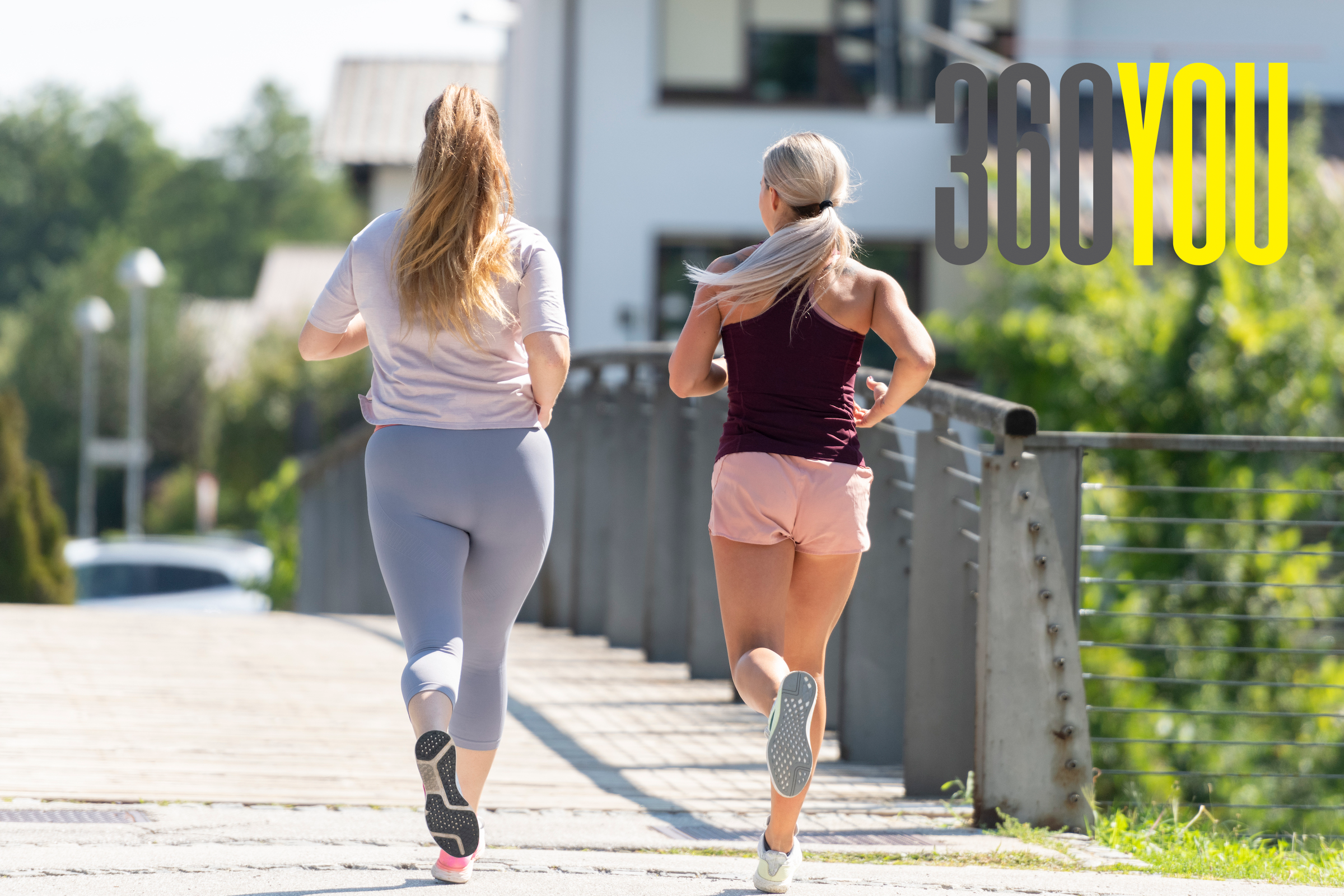360 YOU: A Close Look at Cadence

(Photo: Getty Images)
When I first started running, I had no clue what I was doing. I was out there with arms and legs flailing just trying to make something happen. I had been running for years before anyone ever told me, “You need to work on your cadence.”
My husband (boyfriend at the time) was the first to say my cadence needed work. I didn’t listen. Then a former elite marathoner who directs a local workout every Saturday said, “That turnover looks soft.” I thought about it, but still didn’t listen.
The nail in the coffin was when I saw a video of myself finishing a half marathon. It was a terrifying sight. I looked like I was taking three steps to try to finish the race. I looked slow and like I was leapfrogging to the finish line. Finally after that race, I was ready to make a change.
Turns out I’m not the only one that needs to work on cadence. Many novice, intermediate, and even advanced runners naturally have a slow cadence when they run–slower than what is most efficient for distance running. This is especially true for runners who started as adults. The standard number for efficient cadence is 180 steps per minute (SPM). My cadence was around 160 SPM or even sometimes in the 150s. My stride was long and loping and slow. There was no quickness in my legs. How could I expect myself to run fast without moving my legs quickly?
RELATED: Is “Micro-Quitting” Keeping You From Reaching Your Full Potential?
Cadence: The Perfect Starting Point
Cadence is the perfect place to start when you’re trying to improve running form and efficiency. Since many runners’ cadence is too slow, this is low hanging fruit to see some improvement pretty quickly. The improvement is also very measurable since you’re just looking at one number. And cadence is a great way to set the stage for improvement in other form elements. Things like forward lean and foot strike are tough to improve if you don’t have a decent cadence.
How do I know what my cadence is?
The easy way to start measuring cadence is to let your watch tell you. Almost all GPS running watches these days can count your cadence and give you instant and constant feedback. Put cadence on one of your data screens so you can monitor it in real time.
If you don’t have a running watch, you can always do it the old fashioned way and count. Just count every time your right foot hits the ground for 1 minute, then multiply by 2.
How to Improve Your Cadence
First and foremost, you have to practice running at a higher cadence. Running near top speed for short intervals will naturally generate a higher cadence, but it’s still possible to run with a long, loping stride even when you’re trying to run fast. The real improvement will come with conscious effort and practice during easy runs.
Only try to increase 5-10 steps per minute at a time. If you’re running with a 160 SPM cadence, don’t try to sustain 180 SPM right off the bat. Your muscles have to get used to moving quicker and it takes a while for your legs to adapt and strengthen. So if your cadence is 160 steps per minute, try averaging 165 SPM. When that is comfortable and regular, move up to 170 SPM.
Aside from practicing on the run, cycling with a low resistance (like on a spin bike) can help your muscles to learn to turnover quick. So if you like to cycle for cross-training, keep the resistance a little lower and the pedaling a little quicker.
RELATED: 13 At-Home Cross-Training Exercises for Runners
You may be wondering: How do I run with a faster cadence without running faster? This is by far the most asked question I get from fellow runners trying to improve their cadence. Running with a quicker cadence isn’t meant to force you to speed up. We should be able to run with a quick cadence even at a slow and easy pace.
The answer is in the stride length. My stride before was too long. In order to make a quicker cadence and keep the pace the same, I had to also learn to take shorter, choppier strides. So you’re essentially learning two new skills at once.
Why Does Cadence Even Matter?
Whether you’re running for competition or just for fun, you want to be able to continue running injury-free and enjoy every step. An efficient cadence will help you go longer and faster with less effort. The right cadence will naturally promote a more efficient foot strike and put less pressure on your muscles, which will drastically reduce the risk of injury. So no matter what your purpose is when you lace up, improving your cadence will heighten your experience and enhance your performance.
I was able to improve and manage a 3:28 marathon even with my too-long stride. Once I started working to improve my cadence, I was motivated to follow it up and improve other aspects of my running form. Things began to click for me and I ran huge marathon PR of 3:11.
It’s an ongoing improvement. Every season I start over with a focus on good cadence to build a solid platform for improving my speed and fitness even more.
If you’re looking to improve your running, you’ll want to start with cadence. I promise that it will set off a domino effect to help your running take off once you do!